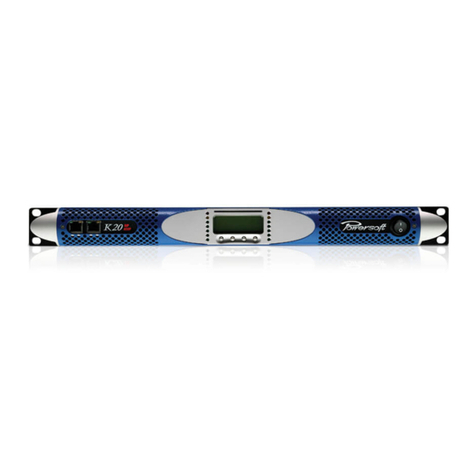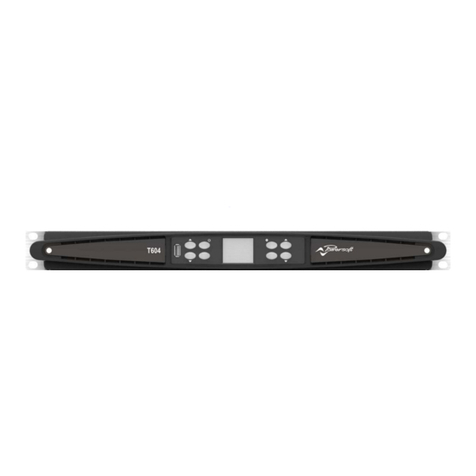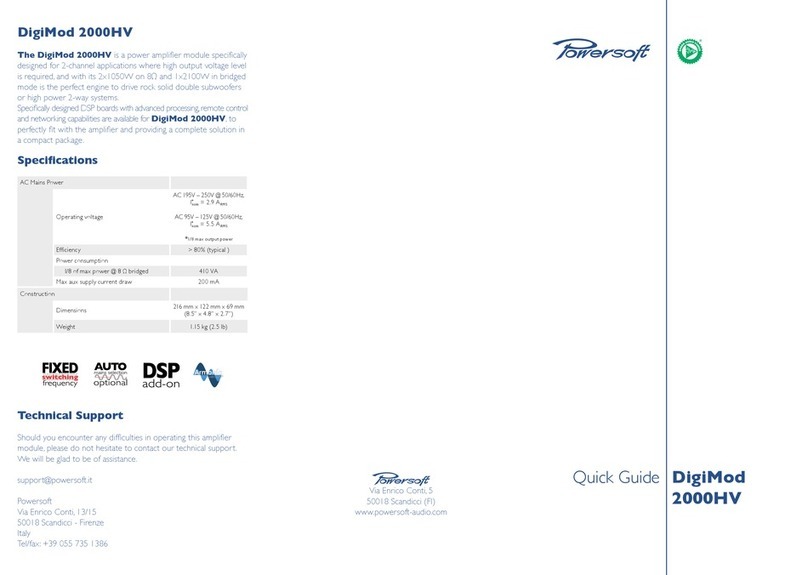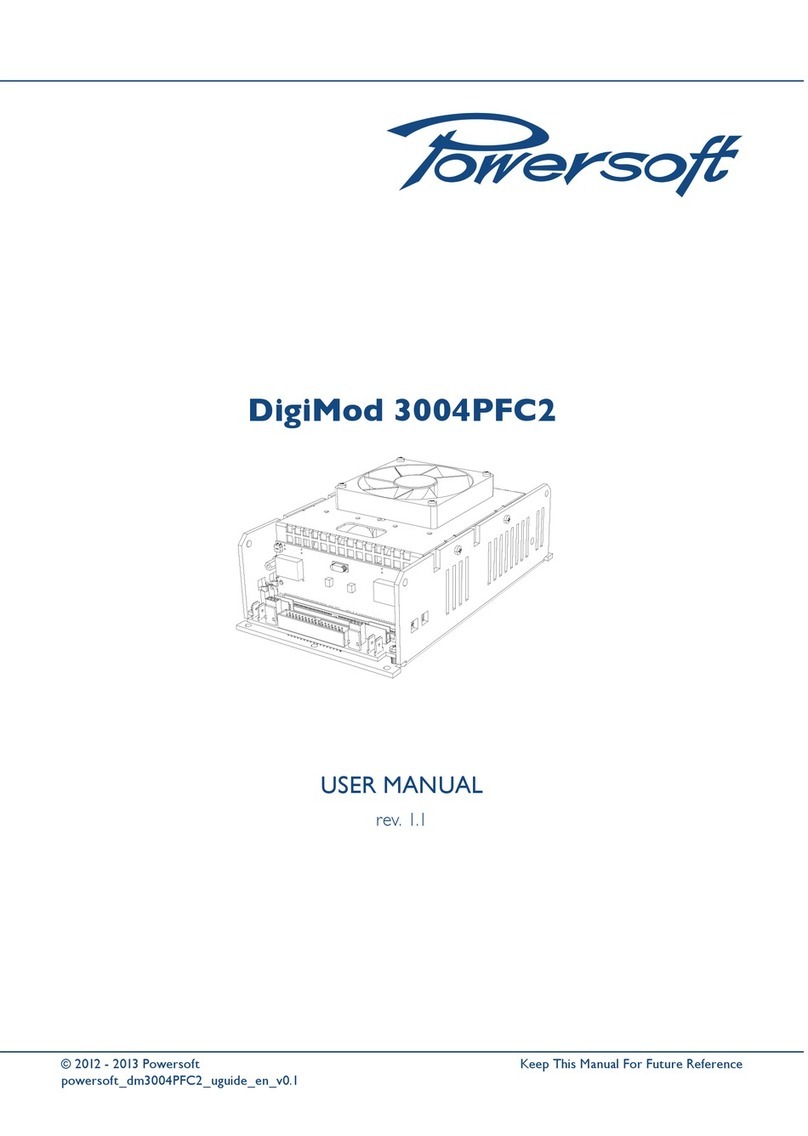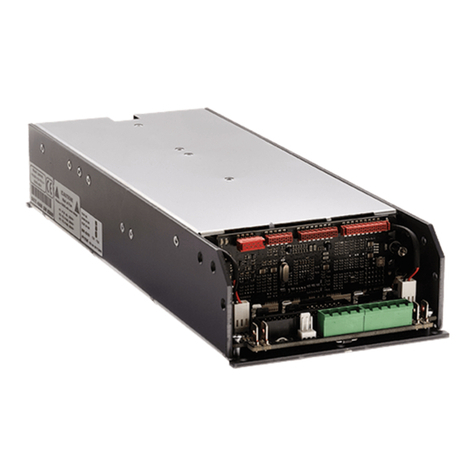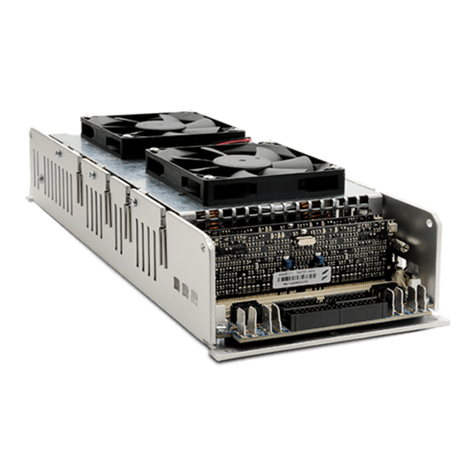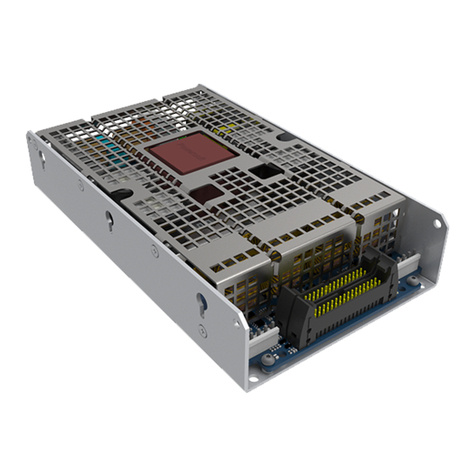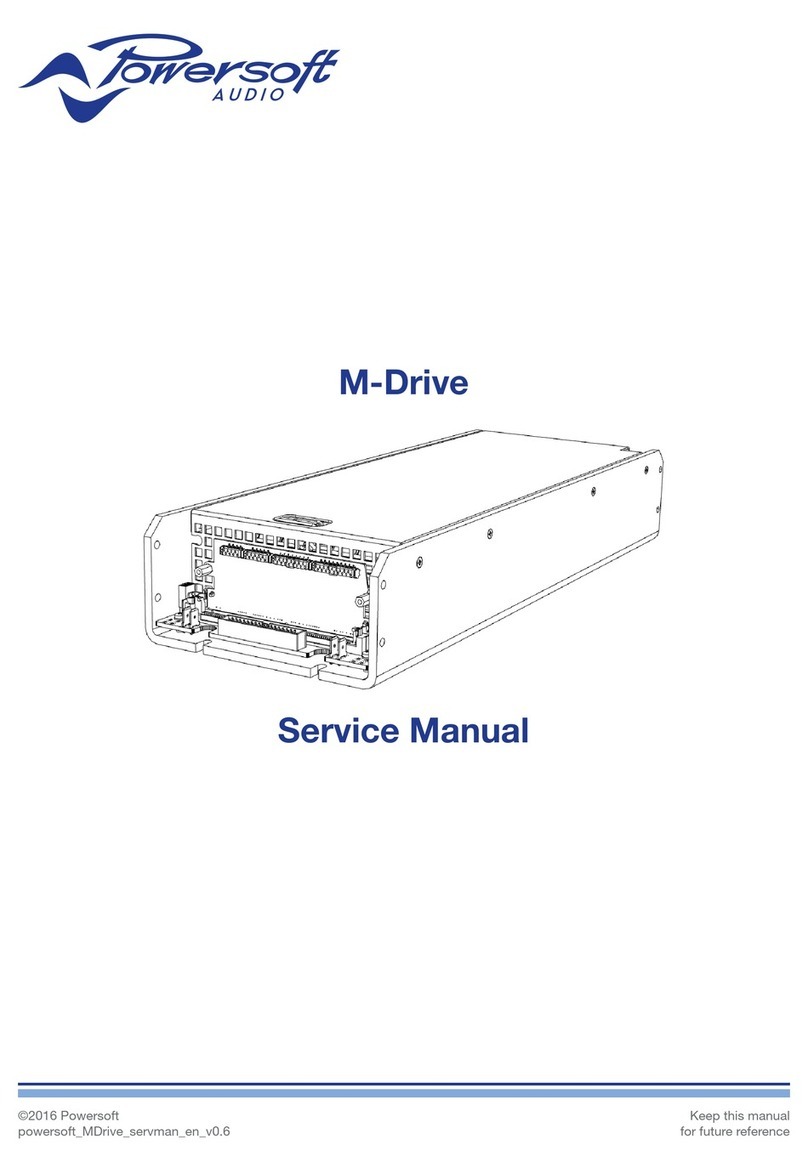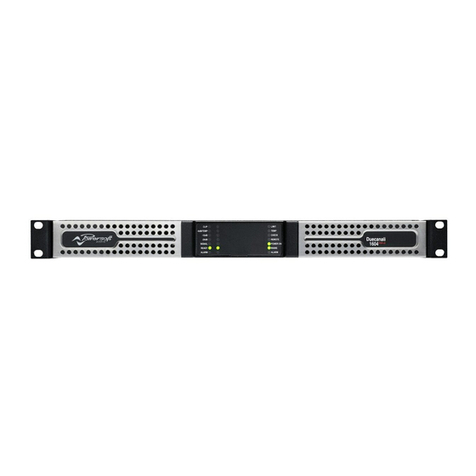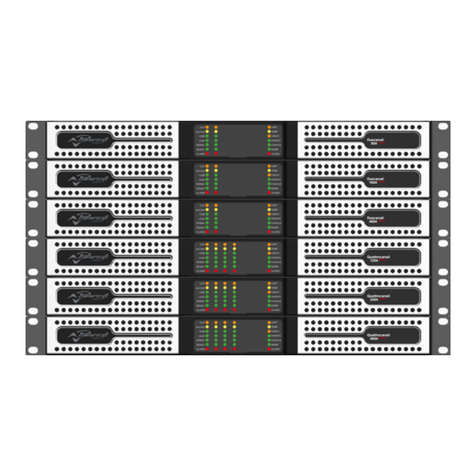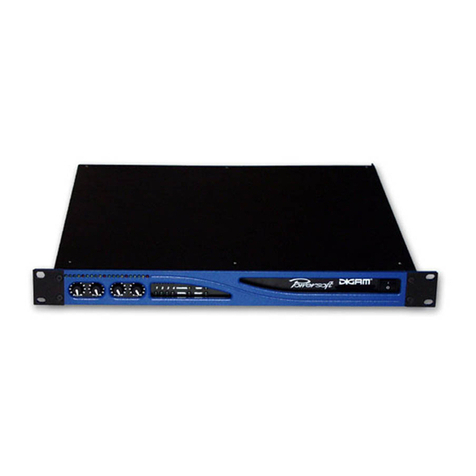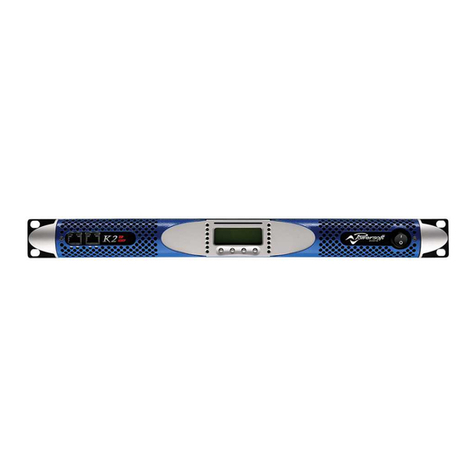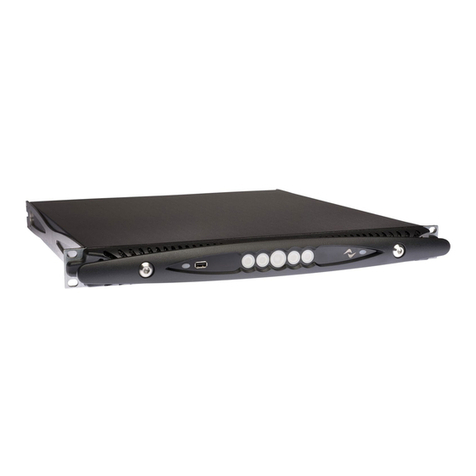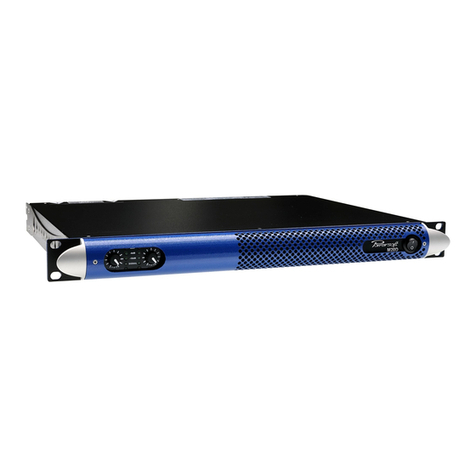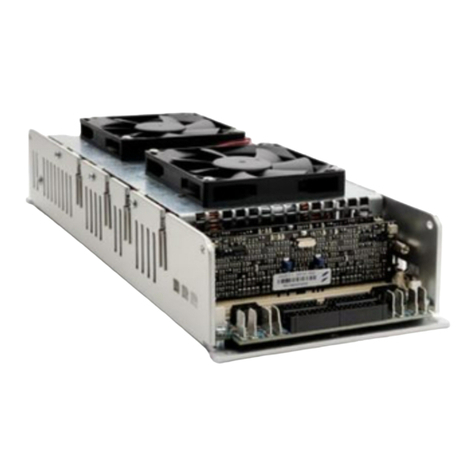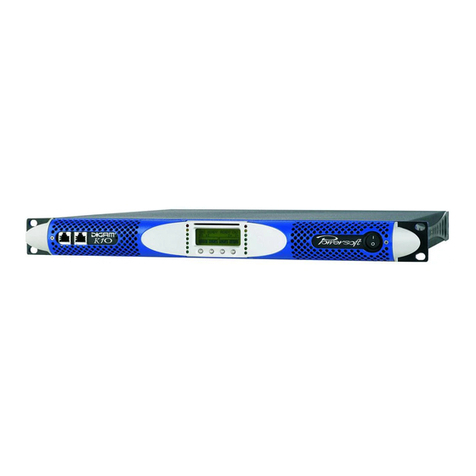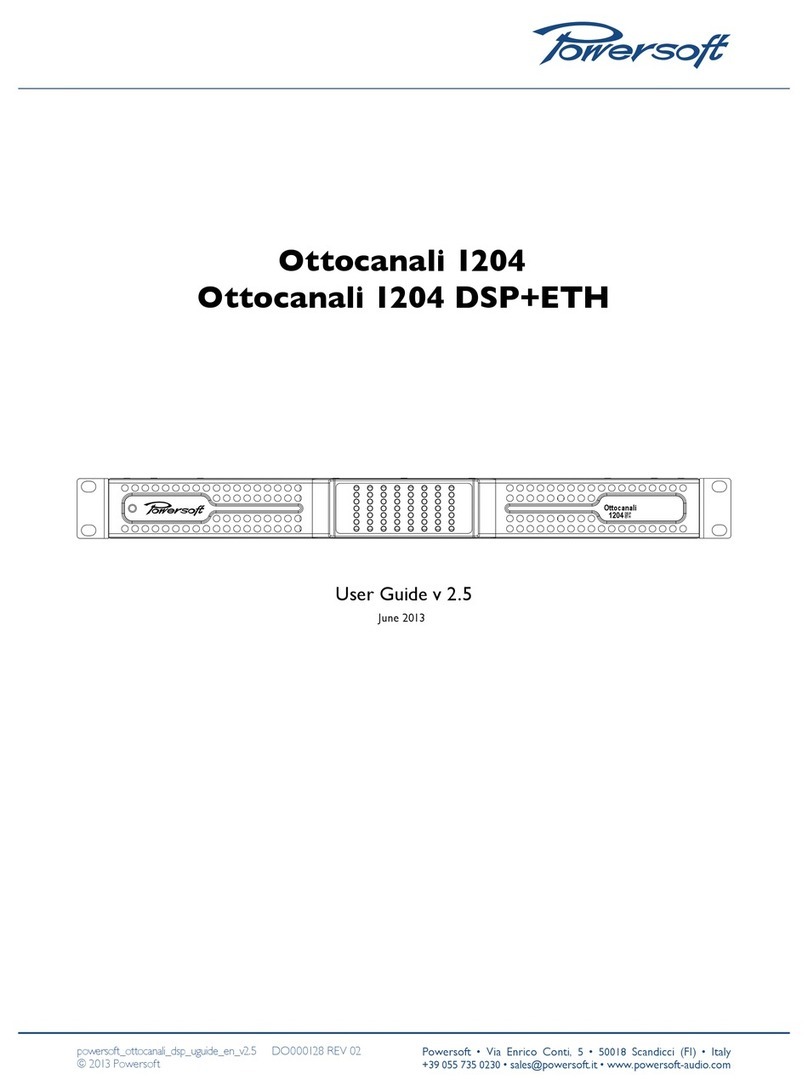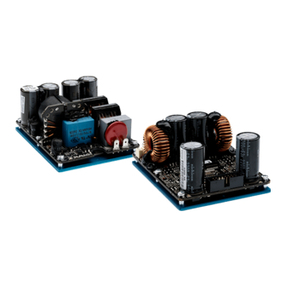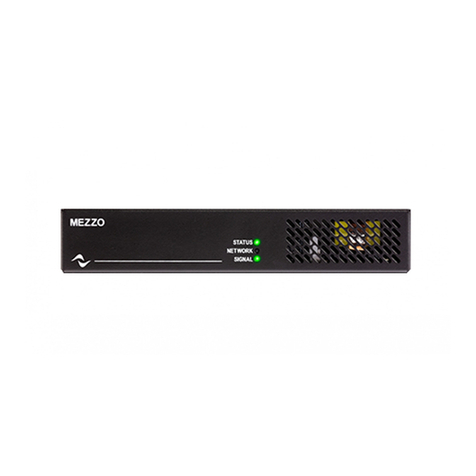1 Important safety instructions
CAUTION: TO REDUCE THE RISK OF ELECTRIC SHOCK,
DO NOT ATTEMPT TO OPEN ANY PART OF THE UNIT. NO
USER-SERVICEABLE PARTS INSIDE. REFER SERVICING TO
QUALIFIED SERVICE PERSONNEL.
WARNING: TO REDUCE THE RISK OF FIRE OR ELECTRIC
SHOCK, DO NOT EXPOSE THIS APPARATUS TO RAIN OR
MOISTURE. OBJECTS FILLED WITH LIQUIDS, SUCH AS VAS-
ES, SHOULD NOT BE PLACED ON THIS APPARATUS.
TO COMPLETELY DISCONNECT THIS APPARATUS FROM
THE AC MAINS, DISCONNECT THE POWER SUPPLY CORD
PLUG FROM THE AC RECEPTACLE.
THE MAINS PLUG OF THE POWER SUPPLY CORD MUST
REMAIN READILY ACCESSIBLE.
SAFEGUARDS: This unit has been engineered and manufactured
to assure your personal safety. Improper use can result in potential
electrical shock or re hazards. In order not to defeat the safe-
guards, observe the following instructions for its installation, use
and servicing.
fRead these instructions.
fKeep these instructions.
fHeed all warnings.
fFollow all instructions.
fDo not use this amplier near water.
fClean only with a dry cloth.
fEnsure a proper ventilation.
fInstall in accordance with Powersoft’s instructions.
fDo not install near any heat sources or apparatus that
produce heat.
fProtect the power cord from being walked on or pinched
particularly at plugs, convenience receptacles, and the point
where they exit from the apparatus.
fDo not defeat the safety purpose of the polarized or
grounding-type plug. A polarized plug has two blades with
one wider than the other. A grounding type plug has two
blades and a third grounding prong. The wide blade or the
third prong are provided for your safety. If the provided
plug does not t into your outlet, consult an electrician for
replacement of the obsolete outlet.
fUnplug this amplier during lightning storms or when unused
for long periods of time.
fContact the authorized service center for ordinary and
extraordinary maintenance.
fOnly use attachments/accessories specied by Powersoft.
NOTES: This equipment has been tested and found to comply
by Competent Body (Directive 2004/108 /EC) pursuant to the
product family standard for audio professional use: EN 55103-1
and EN 55103-2 standard.
This equipment has been tested and found to comply by Notied
Body 2014 (Directive 2006 / 95/ EC) pursuant to the audio appa-
ratus safety requirements: EN 60065 and EN 6006/A1 standard.
EXPLANATIONS OF GRAPHICAL SYMBOLS
The Lightning Flash with arrowhead symbol within an
equilateral triangle is intended to alert the user to the
presence of uninsulated “dangerous voltage” within the
product enclosure that may be of sufcient magnitude to
constitute a risk of shock to persons.
The Exclamation Point within an equilateral triangle is
intended to alert the user to the presence of important
operating and maintenance (servicing) instructions in the
literature accompanying the product.
2 Precautions regarding installation
2.1 Location
Install the amplier in a well-ventilated location where it
will not be exposed to high temperature or humidity.
Do not install the amplier in a location that is exposed to direct
sun rays, or near hot appliances or radiators. Excessive heat can
adversely affect the cabinet and internal components. Installation
of the amplier in a damp or dusty environment may result in
malfunction or accident.
Placing and using the amplier for long periods of time on
heat generating sources will affect its performance. Avoid
placing the amplier on heat generating sources. Install this am-
plier as far as possible from tuners and TV sets. An amplier
installed in close proximity of such equipment may experience
noise or generic performance degradation.
No naked ame sources such as lighted candles should be
placed on the amplier.
Do not spill water or other liquids into or on the amplier.
WARNING
To prevent re or electric shock:
fThe ventilation openings must not be impeded by any item
such as newspapers, tablecloths, curtains etc; keep a distance
of at least 50 cm from the front and rear ventilation openings
of the amplier.
fDo not expose this amplier to rain or moisture.
fThis equipment must not be exposed to dripping or splashing
liquids: objects lled with liquids, such as vases, must not be
placed on the amplier.
4
CAUTION
RISK OF ELECTRIC SHOCK
DO NOT OPEN
